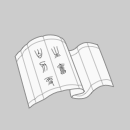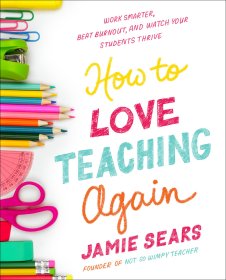
【预订】The Other Family Doctor
书籍内容简介可联系客服查阅,查书找书开票同样可以联系客服
¥ 118 ¥ 118 九五品
库存2件
广东广州
认证卖家担保交易快速发货售后保障
作者Karen Fine
出版社Knopf Doubleday Publishing Group
ISBN9780593466919
出版时间2024-03
装帧平装
定价118元
货号YB-88908
上书时间2024-06-29
- 最新上架
商品详情
- 品相描述:九五品
- 商品描述
-
商品简介
NEW YORK TIMES BESTSELLER • Calling all animal lovers! A heartwarming memoir about one woman's career as a vet and the unique role pets play in our lives • “Filled with compassion and wisdom, Karen Fine is a healer whose own wounds have deepened her gifts for bringing animals and their people comfort and peace.” —Sy Montgomery, bestselling author of The Soul of an Octopus
A tribute to our furry, feathery, scaley, and wet family members, All Creatures Great and Small meets Being Mortal in this compelling memoir of one woman's dream to become a veterinarian.
Karen Fine always knew that she wanted to be a vet and wasn't going to let anything stop her: not her allergy to cats, and not the fact that in the '80s veterinary medicine was still a mostly male profession. Inspired by her grandfather, a compassionate doctor who paid house calls to all his (human) patients, Dr. Fine persevered, and brought her Oupa's principles into her own practice, which emphasizes the need to understand her patients’ stories to provide the best possible care.
And in The Other Family Doctor, Dr. Fine shares all these touching, joyful, heartbreaking, and life-affirming tales that make up her career as a vet. There's:
• The feral cat who becomes a creature out of a fable when he puts his trust in a young vet to heal his injured paw
• The pot-bellied pig who grows too big to fit in the car but remains a cherished part of her family
• The surprising colony of perfectly behaved ferrets
• The beloved aging pet who gives her people the gift of accompanying them on one final family vacation
• The dog who saves his owner's life in a most unexpected way
Woven into Dr. Fine's story are, of course, also the stories of her own pets: the birds, cats, and dogs who have taught her the most valuable lessons—how caring for the animals in our lives can teach us to better care for ourselves, especially when life seems precarious.
纽约时报畅销书• 呼叫所有动物爱好者!这是一本感人的回忆录,讲述了一名女性兽医的职业生涯以及宠物在我们生活中所扮演的独特角色……凯伦·法恩充满同情心和智慧,是一位治疗师,她自己的伤口加深了她的天赋,帮助人们治愈疾病。动物和它们的人民安慰与和平。 畅销书《章鱼的灵魂》作者章鱼的灵魂
向我们毛茸茸的、羽毛状的、鳞片状的和湿漉漉的家庭成员致敬,在这本引人入胜的回忆录中,所有大大小小的生物与凡人相遇一个女人的梦想是成为一名兽医。
凯伦·法恩一直都知道她想成为一名兽医,并且不会让任何事情阻止她:不是她对猫过敏,也不是事实在八十年代,兽医仍然是一个以男性为主的职业。 Fine 医生的祖父是一位富有同情心的医生,他对所有(人类)患者进行出诊,受到她祖父的启发,Fine 医生坚持不懈,并将她的“Oupa”原则带入自己的实践中,该原则“强调需要了解患者的需求”。
在《另一位家庭医生》中,法恩医生分享了所有这些感人、欢乐、令人心碎和肯定生命的故事,弥补她作为兽医的职业生涯。有:
•当一只野猫信任一位年轻的兽医来治愈他受伤的爪子时,它就变成了寓言中的生物
•这只大腹便便的猪长得太大了,无法放进车里,但仍然是她家人珍视的一部分
•行为完美的雪貂令人惊讶的群体
•这只心爱的年老宠物给了她的人们陪伴他们度过最后一次家庭假期的礼物
•这只狗以最意想不到的方式拯救了主人的生命
当然,也融入了 Fine 博士的故事的还有她自己的宠物的故事:鸟、猫和狗教给她最有价值的课程——如何照顾生活中的动物可以教会我们更好地照顾自己,尤其是当生活似乎不稳定时。
作者简介
Dr. Karen Fine is a holistic veterinarian who is fascinated by the relationships between animals and their people. She is an associate veterinarian at Central Animal Hospital in Leominster, Massachusetts. For twenty-five years she owned and operated her own house call practice in central Massachusetts. Dr. Fine is certified in veterinary acupuncture through the International Veterinary Acupuncture Society. A leading expert in the emerging field of veterinary narrative medicine, she has also authored a textbook called Narrative Medicine in Veterinary Practice.
精彩内容
1
It’s a Calling
The cat had come with the house.
He was a feral black cat that John and Susan, who bought the tidy bungalow in a quiet tree-lined neighborhood, had named Miles. Many people wouldn’t have concerned themselves with a stray, especially not when doing so cost them money. But although John and Susan hadn’t expected Miles, they accepted him as their responsibility. They had him neutered and vaccinated at a nearby clinic. Miles warmed to his new humans, enjoying their attention even though he remained wild at heart, preferring to be outdoors most of the time. John and Susan allowed him into the house whenever he wanted, keeping him fed and warm. Slowly, he had become a part of their family.
But one chilly afternoon in February, John called me, his voice heavy with worry. He thought Miles might have an infected front paw. It was swollen, he explained over the phone, and Miles was limping. Suspecting an abscess, I told him it might need to be treated at a clinic. But as he and Susan were unable to catch Miles, I agreed to come to their house.
I was never happy about using a fishing net to catch a cat. I had learned the technique from another house-call veterinarian, who specialized in cats and cared for some feral cat colonies. It always felt traumatic, especially when I knew the cats I cared for didn’t understand. Still, I kept a fishing net in my car, if only to use as a last resort.
This was a last-resort kind of case.
When I arrived at their home, John and Susan led me to the back bathroom, where they’d been able to corral Miles. The poor kitty was petrified from being cooped up, and although he wouldn’t allow me near him, I was able to trap him with the net. Wild creatures do not like being confined, and I hoped to be able to release him soon.
Remembering what the other vet had taught me, I used the double-wrapping method to enfold Miles until he was snug inside the net. My patient scratched and clawed, and I felt his distress. Yet I knew I had to be vigilant not to let him out or I wouldn’t be able to catch him again. This was my one chance to help him. Finally, he settled and became still.
Biting my lip in concentration, I gently slid the long handle of the cat-net package a few feet along the linoleum floor into the kitchen, where the light was better and I had more room to work. I stood on the handle to hold the net in place. As soon as I looked closely at the paw, I could tell what was causing the limp. Occasionally a cat’s claw will grow long enough to curl around in a circle and continue growing right into the pad, causing pain and often an infection. Miles had a badly ingrown nail, which had become embedded in his paw.
I would need to trim the nail to relieve Miles’s pain and allow the infection to heal. However, I couldn’t get to the nail with Miles compressed under the netting. Complicating matters, it was a front claw, close to Miles’s sharp set of teeth. In a clinic setting, it would have taken two trained professionals using leather gloves to hold Miles so I could trim his nail safely, if it could be done at all. Otherwise, we’d have to anesthetize him. But here, hovering over Miles in the middle of the kitchen, none of those options was available to me.
I explained the problem to John and Susan and told them I didn’t know what to do. They looked at me nervously. Although it would terrify Miles to go to a clinic, it would be a good option if I could get him into a carrier. But I doubted I’d be able to do that once I unwrapped him from the netting. And I had no injectable anesthetics with me, as that was not something I used in clients’ homes. We had no good options.
As I stood there debating what to do next, this feral cat, trapped in the net, slowly extended the affected paw through the netting. The three of us watched, disbelieving, as he spread his toes. We looked at each other, mouths agape and soundless. That old thorn-in-the-lion’s-paw story was flashing before our collective eyes.
As I quickly found my nail trimmers and cut the offending nail, Miles kept his paw completely still. None of us made a sound for fear of breaking whatever spell he was under. At last, I released Miles from the net. He shook himself and headed back outside. His limp was gone.
It was impossible to look at Miles, who would surely make a full recovery with the help of some antibiotics, and at John and Susan, who cared so much about this feral cat, and not think about the ways they had agreed to take care of each other and how, because of this, they were all better off.
I’ve been a veterinarian for thirty years. For most of that time I’ve had my own house-call practice, going inside people’s homes to care for their animals, meeting my human clients and animal patients where they live. I’ve been in hundreds of residences, working at kitchen tables and living room sofas, even in bedrooms and bathrooms. Occasionally clients seem awkward as they invite me in, apologizing for clutter, dishes in a sink, or an unmade bed. “Don’t worry at all,” I respond. “No one sees my house!”
In this book, I am going to open my door and allow a view into my own home. You may see my clutter, my unmade bed, the dishes in my sink. You may witness how fully I’ve loved my own animals, and how I have struggled personally as well as professionally over the difficulties pet lovers face. And you can discover how much I have learned from my animal family members and patients about life, and love, and even death.
When people ask me when I knew I wanted to become a veterinarian, I tell them I’ve known my whole life. I have always loved animals. As a child, I drew them with crayons. I read books about them. I pretended to be a dog, a cat, or a horse and favored stuffed animals for toys. Yet one trip stands out in my memory as the moment when I knew I didn’t just want to be a vet but needed to make animals a central part of my life.
Although I grew up in Massachusetts, my parents were born and raised in South Africa, and most of my extended family lived there. Holidays were lonely ti
— 没有更多了 —












以下为对购买帮助不大的评价